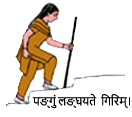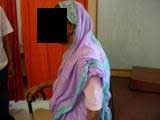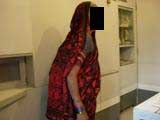Osteoporosis is one of the costliest diseases of aging. Osteoporosis implies a diminution of quality and mineral density of bone. Bones become fragile and susceptible to fractures on minor trauma. The problem of osteoporosis is underestimated and grossly neglected in India. It is estimated that 20% of all adults, including more than 46 million females are osteoporotic in India. It appears that osteoporotic fractures occur10-20 years earlier in the Indian population as compared to the West. Orthopedic surgeons manage most fragility fractures. Unfortunately, many of them do not advise these patients regarding osteoporosis tests and management.
Features: Osteoporosis is rightly known as a 'hidden enemy' in our body. It does not cause any symptoms (akin to many cases of blood pressure, diabetes, and raised cholesterol). The problem is recognized only after a fracture following trivial trauma. A low trauma or stress fracture is defined as one that occurs after a fall from a height equivalent to the patient's height. Three common osteoporotic fractures are - wrist, vertebra (spine), and thigh bone (femur). All fractures are costly and cause significant disability as well as loss of workdays. Hip fractures are most dangerous as 15-20% of these cases die within one year due to one or the other causes, and around 50% of them cannot walk without support. Vertebral fractures are usually painless but lead to spinal deformity (dowager's or widow's hump) and loss of height. They can cause pain that radiates to flanks. Each vertebral fracture reduces respiratory capacity by about 9%.
Types
- Postmenopausal - This occurs in females within 15-20 years of menopause but may precede by 2-3 years. Lack of female hormones leads to loss of bone due to increased osteoclast action and subsequent calcium resorption.
- Senile - This is due to an age-related decrease in osteoblastic activity and the inability of the body to produce active Vitamin D.
- Secondary osteoporosis is due to an identifiable cause. Some of the causes are as follows:
- Thyroid and parathyroid hyperfunction, Type 1 diabetes, Hypogonadism
- Diseases causing chronic diarrhea
- Inflammatory diseases: rheumatoid arthritis, ankylosing spondylitis, etc
- Chronic kidney disease
- Drugs such as glucocorticoids, anticoagulants, anticonvulsants, and anticancer drugs
- Others
Though rare, children can also develop primary as well as secondary osteoporosis.
Risk Factors
World Health Organization has derived an assessment tool based on various risks for a 10-year probability of fracture in patients with osteoporosis.
These and other risk factors for the development of osteoporosis are summarized below:
| Personal risks | - Female sex - Low body weight/body mass index - Early menopause - Family history of osteoporosis/fracture - Surgical removal of uterus and/or ovaries |
| Lifestyle Risks | - Smoking (More than 20 cigarettes/day) - Alcohol (90 ml or more hard liquor/day) - Caffeine excess (More than 2 servings/day) - Lack of exposure to sunlight - Low Calcium and Vitamin D intake - * Physical Inactivity (Up to 5% bone loss/month) |
| Drugs and Diseases | - See Secondary Osteoporosis |
* Prolonged bed rest in pregnancy, fractures, chronic diseases, and others are harmful to bones
Investigations
Standard X-ray is highly insensitive for the diagnosis of osteoporosis as bone loss is apparent only after a 30-50% decrease in bone mass. Measurement of bone density is an accepted method of diagnosis though it does not indicate the cause of osteoporosis. Ultrasound and Computed Tomography (CT) are not yet approved for estimating the true bone density values. Dual Energy X-ray Absorptiometry (DEXA) is the only method endorsed by WHO at present. DEXA compares the bone density of a patient with that of a standard individual. No Indian standards are available. All women above 65 years of age and those with risk factors need to be screened for bone mineral density (BMD) by DEXA. FRAX requires estimation of BMD at the femoral neck only. Blood and urine examinations for biochemical markers of bone turnover are not routinely used in clinical practice.
Two online tools are available for the assessment of fracture risk:
Risk factors included in FRAX are – age, sex, weight, height, previous fracture, parent hip fracture, current smoking, steroid drugs, rheumatoid arthritis, secondary osteoporosis, and alcohol consumption (3 or more units/day).
QFracture includes the following additional risk factors – diabetes, stay in nursing/care home, history of falls, dementia, cancer, asthma, heart attack, stroke, chronic liver/kidney disease, Parkinson's disease, malabsorption, endocrine problems, epilepsy, anticonvulsant and antidepressant drugs, hormone replacement pills containing estrogen only.
Management
No therapy can fully restore lost bone mass. It is, therefore, necessary to achieve higher peak bone mass at 25-30 years of age. Regular exercise and proper nutrition (including adequate calcium and vitamin D) during childhood and young age are necessary to achieve maximum bone mass. Sufficient proteins, calcium, and vitamin D, along with exercise, are essential during later years too. In addition, smoking and alcohol consumption must be stopped.
One will not get a fracture if there is no trauma. Therefore, the prevention of falls is an essential aspect of osteoporosis therapy. Proper ground surface with adequate illumination, handrails, correction of vision, and adequate treatment of medical diseases that cause giddiness and imbalance are all necessary for avoiding falls in the elderly.
Bisphosphonates are the drugs commonly prescribed for the treatment of osteoporosis. Oral bisphosphonates can be administered once a week or month. These tablets must be consumed on an empty stomach with 200 ml of water. One should not lie down or bend forwards and avoid food for 30 minutes after ingestion of the tablet. Intravenous bisphosphonates are administered once in 3 or 12 months. Intravenous bisphosphonates and certain other drugs (raloxifene, teriparatide, and newly introduced denosumab) can be used in special circumstances on medical advice.


